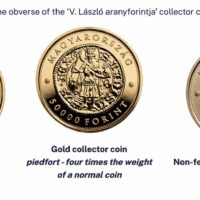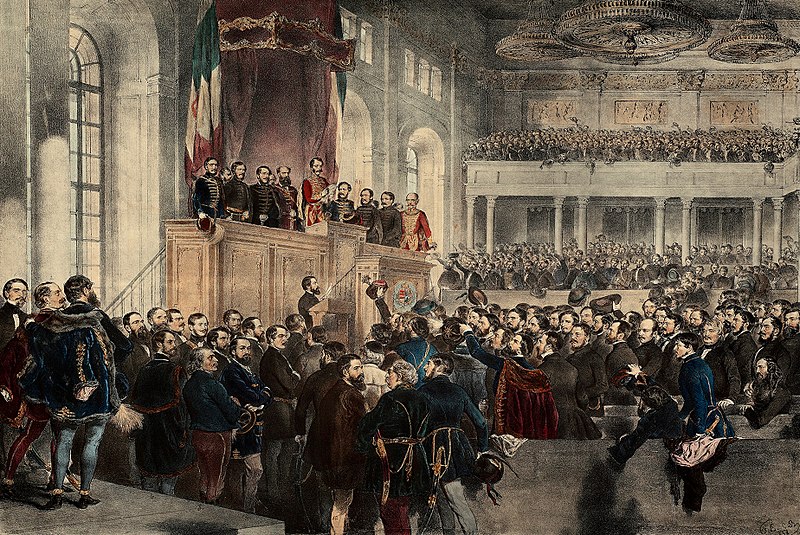The first ever National Assembly of Hungary opened 170 years ago
It was opened on July 5, 1848, by Archduke Stephen, the palatine of Hungary. Though it could only work for a bit more than one year, it passed many bills that transformed Hungary from a feudal state to a liberal one. Moreover, it could protect Hungary from the Habsburg military aggression after Vienna decided to return to absolutism.
The example was Great-Britain
Of course, there was a kind of parliament before, the Diet of Hungary sitting mostly in Pozsony (Bratislava). For example, it installed Hungarian as the official language of the country instead of Latin in 1844. However, though it should have met at least once every three years the Habsburg monarch often broke this law. Moreover, only the nobles, the clergy and the royal free cities had the right to vote. Thus, the diet did not represent the peoples of Hungary. Consequently, it did not meet the requirements of a liberal state like Great-Britain. In fact,
the political system of Great-Britain stood as an example before reform movement.
Here you can watch a video from the Hungarian film Hídember about the greatest Hungarian, István Széchenyi’s life in which it might be clear how this diet worked and who could take part in the sessions:
The Revolution wins
Thus, it is not surprising that an annual national assembly in Pest was third among the 12 points of the Hungarian revolutionaries of 1848. After the successful revolution Ferdinand V, the king of Hungary and the Emperor of the Habsburg Empire signed a collection of bills introduced by Lajos Kossuth. In fact, these aimed to modernise Hungary. Consequently, the so called April laws included Hungarian control of its popular national guard, national budget and Hungarian foreign policy, as well as the removal of serfdom.
Lajos KossuthOf course, they also included
popular representation by parliamentary elections
and the abolition of the old feudal diet.
Hungary became a liberal country
The third paragraph of the April laws established an annual, three-year cycle national assembly in Pest. Interestingly, it did not take the right to vote from anybody, not even from the poor nobles. Thus, all the men could vote who was more than 20 years old, was not under prosecution and was a member of a recognised church. Furthermore, it rated voters according to property qualification.
Therefore, only those could vote who had a real estate worth 300 forints in the cities or a quarter parcels in the villages. Furthermore, craftsmen working with at least one famulus or having 100 Forints annual revenue could also vote. Finally, it gave all doctors, lawyers, priests, teachers and notaries the right to vote.
Political campaign before the elections, 1848 Source: wikipediaAs a result, apart from the 200,000 nobles
more than 600,000 thousand other people could take part on the elections.
Passing this bill meant that Hungary became one of the most liberal countries of that time.
“Our homeland is in danger!”
For example, a quarter of the altogether 377 mandates belonged to the cities. The results showed that most of the constituencies elected reformist nobles, but not radicals. For example, Sándor Petőfi, the most famous Hungarian poet was not able to become an MP. In contrast,
Lajos Kossuth was elected in 6 constituencies,
and he finally chose the downtown of Pest to represent.
The national assembly was opened on July 5 by Archduke Stephen, the palatine of Hungary. Apart from the MPs the members of the government first ever responsible PM to the parliament, Lajos Batthyány was also present. In fact, 74% of the 415 representatives were noble while 24% commoners and only 4% peasants.
The opening of the first Hungarian National Assembly. Source: parlament.huThe new parliament’s first and most important task was
to defend the country against hostile troops
trying to crush the successes of the revolution. Thus, after a magnificent speech of Kossuth, it passed a bill that aimed to establish an army of 200 thousand strong and 42 million forints debt to finance it. Furthermore, it created the first ever Hungarian paper money, the so called “Kossuth-bankó.”
The first Hungarian paper-money: Kossuth bankó. Source: wikipedia.please make a donation here
Hot news
Top Hungary news: Serbia partners with Paks, Christmas market prices, prison for commenting, traffic changes, HUF 50,000 coin – 19 November, 2024
Orbán cabinet: Relations between Hungary and the UK to further strengthen
Hungarian Foreign Minister Szijjártó: More people in Europe becoming reasonable about illegal migration
This Hungarian word has become known and used worldwide!
Contemporary Chinese art on display at Hungarian National Museum
Hungarian policy makers leave base rate on hold at 6.50pc





